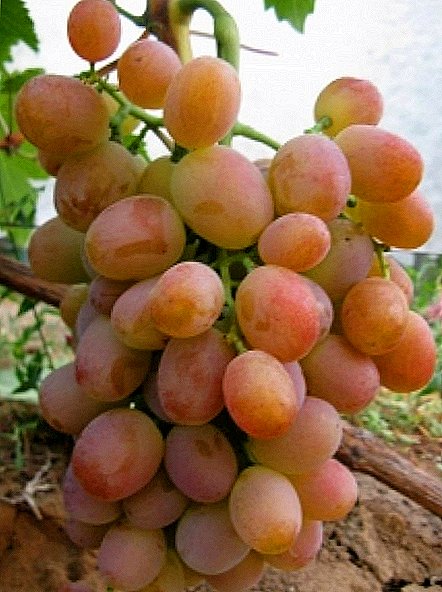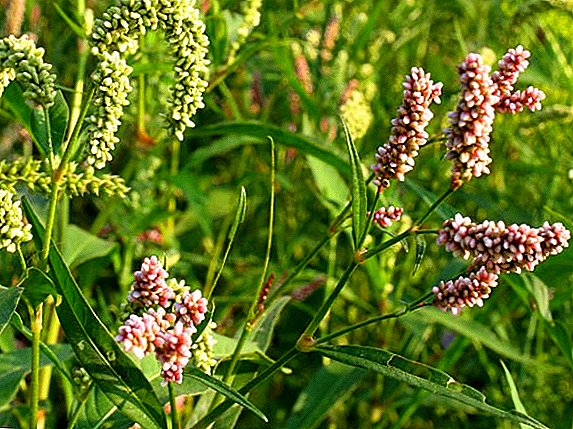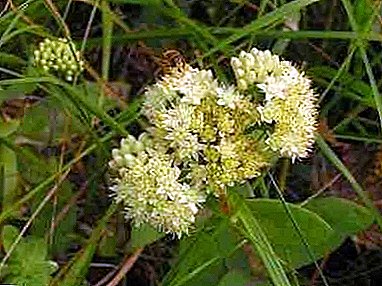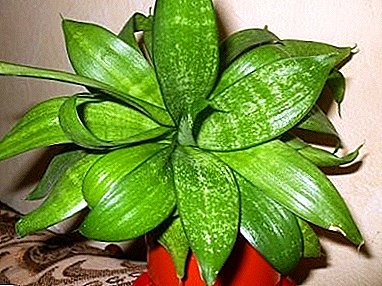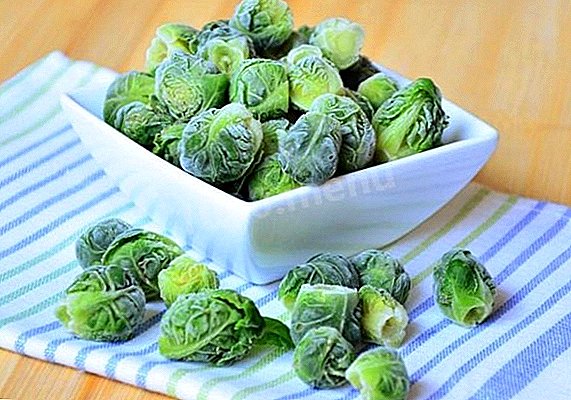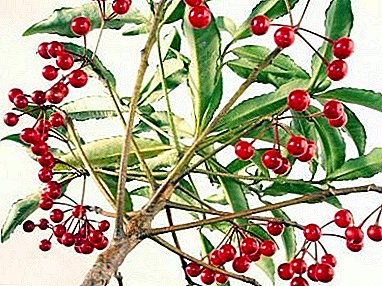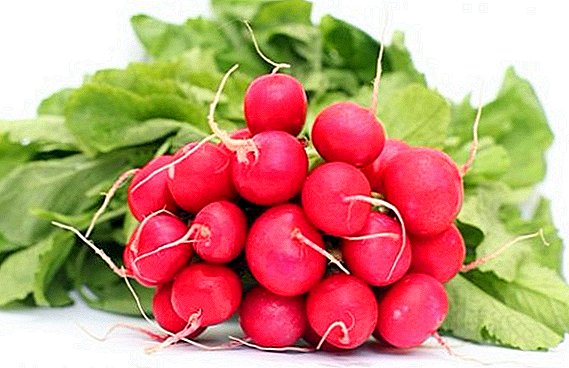 Radish is one of the usual, beloved and healthy vegetables in our latitudes. However, few people know the actual scale of its beneficial properties and the possibility of using the plant in life. In this material we will try to evaluate all its advantages.
Radish is one of the usual, beloved and healthy vegetables in our latitudes. However, few people know the actual scale of its beneficial properties and the possibility of using the plant in life. In this material we will try to evaluate all its advantages.
Radish: terrific composition
So, what is useful radish? It contains vitamins PP, group B, and vitamin C. Eating 250 grams of radish, you will cover the daily rate of this important vitamin for the body. The plant also contains iron, magnesium, phosphorus, calcium, sodium, potassium. These elements contribute to blood formation and normal metabolism in the body.
Radish is rich in nicotinic acid, riboflavin, thiamine. A mustard oil gives a peculiar taste to the vegetable, which provides radish with not only beneficial properties, but also contraindications. So, radishes are recommended for patients with diabetes, obesity, gout, but it is advised not to use it for those who have diseases of the cardiovascular system, gall bladder, liver, pancreas, duodenum, stomach.

Did you know? Radish belongs to the genus Radish and the Cabbage family. Growers agree that Central Asia is its birthplace, from where it spread throughout China and then around the world. It fell into our latitudes thanks to Peter the Great. Today, the fruits and leaves of radish are used not only in cooking, but also for treatment.
Root vegetables and leaves, the beneficial properties of radishes
Due to the huge number of useful elements, the plant has a whole list of various useful properties. Knowing what vitamins in radishes, it is used in the spring as an excellent tool to combat vitamin deficiency. Besides, A huge amount of vitamin C helps to fight colds.
Bitter essential oils have small choleretic properties, which helps to improve intestinal peristalsis, fight edema. Also, the vegetable stimulates appetite, although it has excellent fat burning properties.
 The benefits of radishes for the body is to increase the level of hemoglobin in the blood, normalize the work of the cardiovascular system, strengthen the immune system. Root crops 2.5 times more fiber than, for example, zucchini. Therefore, it helps to get enough, clean the intestines and normalize the level of cholesterol in the body. Thanks to the pectin contained in vegetables, it can be used as a means of cleaning the body of toxins and other harmful substances.
The benefits of radishes for the body is to increase the level of hemoglobin in the blood, normalize the work of the cardiovascular system, strengthen the immune system. Root crops 2.5 times more fiber than, for example, zucchini. Therefore, it helps to get enough, clean the intestines and normalize the level of cholesterol in the body. Thanks to the pectin contained in vegetables, it can be used as a means of cleaning the body of toxins and other harmful substances.
Talking about the benefits of radishes, it is impossible not to mention its preventive effect on cancer. So, for the red color of the skin of radish meets the natural dye anthocyanin, which has similar properties. Besides him, there are a lot of flavonoids in radishes, which are natural antioxidants and neutralize the effect on the body of free radicals. These processes provide another protection for the body against cancer.
Many wonder if it is possible to eat radish leaves? Surprisingly, indeed, you can. Salads are made from them by adding cheese and egg. Such dishes also have a preventive effect, preventing atherosclerosis and vascular diseases, clean the intestines. In the latter case, it is recommended to use a mixture of one part of radish juice with two parts of carrot juice.

Did you know? Radish is the first plant to be grown in space laboratories outside the Earth. The plant was selected for ripening speed, the ability to use all its parts, as well as for the rich composition of vitamins and trace elements.
Radish use and nutrition
Speaking about the cleaning properties of radish, it is necessary to elaborate on the dietary properties of the plant. 100 g of vegetable contains about 15 Kcal. Given its cleansing and fat burning properties, nutritionists strongly recommend eating radishes. True, it is necessary to take into account the characteristics of your body and not to expect an immediate dramatic effect. In total for the season, an adult should eat at least a kilogram of fresh radish.
 However, some doubt the feasibility of including a large amount of radish in the diet due to the fact that it stimulates the appetite. But vitamin C, which contributes to this, is concentrated mainly in the red skin of the root, so you can focus on the light varieties of radish.
However, some doubt the feasibility of including a large amount of radish in the diet due to the fact that it stimulates the appetite. But vitamin C, which contributes to this, is concentrated mainly in the red skin of the root, so you can focus on the light varieties of radish.
Note! To get the maximum benefit from radish, it is necessary to take juicy tubers with bitterness, which have an average ripeness. Overripe radish loses its beneficial properties.
When cooking salads using radish, you should use only vegetable oils so that its vitamins and trace elements are better absorbed. Moreover, it is desirable not to salt the dish, and give a little more garlic. Using radishes in this mode, you can lose 3-4 kg per month.
Radish and cosmetology
Given the impressive list of useful properties of vegetables, the logical question arises, is radish useful in cosmetology? It turns out that it was used as a cosmetic since ancient times, especially for dry skin care. So, having prepared radish lotion, you can rejuvenate and moisturize the skin, give it freshness and elasticity. It is enough to squeeze juice from radish and wipe his face a couple of times a day. Soften and refresh the face will help mask of grated radish. In addition, it will help nourish the skin with essential vitamins.
How to use radish in traditional medicine
 Now let's see how radishes are used by the people to get the maximum benefit and limit their harm to health. As for the root, it is used to treat children's diathesis, giving the child before bedtime some fresh vegetable. For the treatment of cancer, radish is boiled with honey in red wine. The root vegetable, ground into gruel, is mixed with hot water, cooled and applied to frostbite areas of the body, make analgesic compresses for neuralgia and radiculitis.
Now let's see how radishes are used by the people to get the maximum benefit and limit their harm to health. As for the root, it is used to treat children's diathesis, giving the child before bedtime some fresh vegetable. For the treatment of cancer, radish is boiled with honey in red wine. The root vegetable, ground into gruel, is mixed with hot water, cooled and applied to frostbite areas of the body, make analgesic compresses for neuralgia and radiculitis.
Get rid of diarrhea will help a mixture of five crushed root vegetables with a teaspoon of starch and 200 ml of milk. And it should be drunk immediately after preparation. If the long-awaited effect has not come, the procedure is repeated after four hours.
For treatment, use diluted radish juice, which will not irritate the food pathways and the stomach. Restore the tone of the gastrointestinal tract can be a mixture of radish juice and carrots, which must be drunk within an hour after preparation. If you make a mixture with beet juice, you can remove small stones from the gallbladder. For cholelithiasis and catarrh of the upper respiratory tract, it is recommended to drink a mix of radish juice, green bell pepper, and cucumber. Having added honey and onion juice to radish juice, they treat colds.
Important! Radish juice contains cyanogenic glycoside substance. It is known for provoking major disorders in the endocrine system, and sometimes leads to goiter disease.
How to take radishes, cooking recipes
 Understanding the benefits that use of this vegetable can bring, naturally, I want to know how to use it to get the maximum effect. We will tell about it further.
Understanding the benefits that use of this vegetable can bring, naturally, I want to know how to use it to get the maximum effect. We will tell about it further.
Use for cold
The ideal remedy for colds - Radish juice mixed with honey and onion juice. To do this, take the ingredients in approximately equal parts, mix thoroughly, and then take three tablespoons three times a day 20-30 minutes before meals. The course of treatment is at least one and a half weeks. If the cold is accompanied by a strong cough, you can use a gruel of root vegetables boiled in honey.
Radish and radiculitis
It is noticed that compresses of pureed radish perfectly relieve pain when radiculitis and neuralgia. In this case, it is necessary to use as many root crops as necessary to cover the sore area.
The use of radishes for diabetes
Since the plant contains natural insulin, it is often recommended for diabetics. Enough to use salads with the addition of this vegetable to normalize the metabolism, lower blood sugar levels, saturate the diet with vitamins. True, you can not dramatically change the diet, filling it with only radish - the plant is not able to replace insulin injections. Therefore, if you go to use radishes in the treatment of this disease, it is better to first consult with your doctor.
How to clean the intestines with radishes
 Radish is able to clean the intestines, and not so much what part of the plant is used in food. So, leaves of a radish use for salads, and advantage of them not less, than from root crops. Also to establish a metabolism and clean the intestines helps radish juice. Vegetable in any form improves intestinal motility, is useful for constipation and atony.
Radish is able to clean the intestines, and not so much what part of the plant is used in food. So, leaves of a radish use for salads, and advantage of them not less, than from root crops. Also to establish a metabolism and clean the intestines helps radish juice. Vegetable in any form improves intestinal motility, is useful for constipation and atony.
Important! When the root is stored for a long time, it increases the level of starch and coarse fibers. Eating such a radish threatens to irritate the intestinal mucosa.
The useful radish for pregnant women
The undoubted plus of radish is a huge set of vitamins. This is especially true in the spring, when any person lacks vitamins, and pregnant women are doubly. Therefore, radish in this case - the first assistant.
Thanks to the calcium contained in the radish, the expectant mother, by eating a vegetable, helps the bone and muscle tissue in the child. The plant is rich in folic acid, which is specifically prescribed to pregnant women to prevent the development of pathologies in the child. Vitamins K and C reduce the risk of bleeding during childbirth.
 Known for cleansing abilities, the vegetable also helps with pregnancy when women are prone to frequent constipation. This is facilitated not only by the choleretic effect, but also by the abundance of cellulose, which cleanses the intestinal walls, removing all that is superfluous.
Known for cleansing abilities, the vegetable also helps with pregnancy when women are prone to frequent constipation. This is facilitated not only by the choleretic effect, but also by the abundance of cellulose, which cleanses the intestinal walls, removing all that is superfluous.
The only thing you have to be careful about with your future mom when eating radish is the purity of the vegetable. Firstly, early root vegetables often contain a lot of nitrates, which is not at all beneficial for a baby. Secondly, poorly washed radish can be a source of intestinal and other infections. Therefore, it is recommended to wash it with great care.
How to choose a radish
Another question that is worth focusing on is how to choose the right radish. Otherwise, you can buy a completely useless product in terms of useful properties. So, Vitamin-rich vegetable has a smooth, smooth skin without cracks. Black specks on the peel indicate the beginning of the process of decay. Determine the freshness of radish can be on the leaves. Juicy and green speaks of its freshness. Do not forget to feel the roots. They must be firm and not raspinitsya under the fingers, otherwise you have stale, sluggish or overripe radish.
 Try not to buy elongated roots. Usually in the lower part of the radish is collected the maximum amount of nitrates. That is why it is recommended before use more cut the lower and upper parts of the root. Do not buy a very large radish: as a rule, it is not as useful as small.
Try not to buy elongated roots. Usually in the lower part of the radish is collected the maximum amount of nitrates. That is why it is recommended before use more cut the lower and upper parts of the root. Do not buy a very large radish: as a rule, it is not as useful as small.
When using radishes can harm
Keep in mind that not everyone can appreciate the beneficial properties of radish. It is even contraindicated for some people. So, because of its sharpness and bitterness, it cannot be used by people with a diagnosis. peptic ulcer, otherwise the consumption of radish can lead to exacerbations.
As already mentioned, the presence of cyanogenic glycosides can trigger goiter, if a person already has some disorders of the endocrine system. Carefully it should be used during pregnancy.
In general, radish is an extremely useful vegetable. It is especially valuable in spring, as it is rich in various vitamins and microelements. Due to this, it has wide application in medicine, cosmetology and nutrition. But if you have some diseases, it is better to consult a doctor beforehand.


